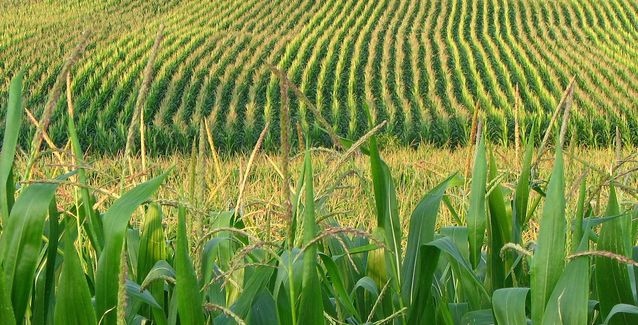Corn acres crash in Arkansas
by January 8, 2025 1:16 pm 822 views

The Arkansas corn crop had a catastrophic drop in acres in 2024, according to the U.S. Department of Agriculture’s National Agricultural Statistical Service (NASS). Acreage in the state fell 41% to 485,000 harvested acres.
Commodity price drops were the primary reason. Corn traded at around $4.20 a bushel last year, a nearly 50% drop from 2022, OpenMarkets reported. Corn prices are projected to remain low in the coming years due to abundant harvests in recent years leading to high seasonal carryover and record yields, AgWeb said.
Other row crops such as soybeans had better prices when compared to corn and that’s another reason acres dropped.
Yields continue to due well despite lower prices. About 186 bushels per acre were harvested in 2024, one bushel off from the record set in 2014, and is projected to produce more than 90 million bushels.
“Corn takes quite a bit of money to tie up and grow, so a lot of input costs with fertilizer and seed, compared to soybeans. With the lower prices, soybeans or other crops looked more attractive in 2024,” said Jason Kelley, extension wheat and feed grains agronomist for the University of Arkansas System Division of Agriculture.
Wheat and sorghum acres have also remained lower last year in the Natural State.
Arkansas farmers like to grow grain sorghum as a rotation crop. It grows well without much water, but there are few buyers in the state and lower profit potential compared to other crops. Grain sorghum acres in Arkansas have remained at about 12,000 acres over the past two years, averaging 80 bushels per acre.
“Both wheat and sorghum have a similar marketing problem in Arkansas,” said Kelley. “You don’t have local markets to sell to. You can haul grain to the Mississippi River, and there’s some other inland places a little closer taking it, but overall, there are only a limited number of grain terminals that are buying wheat or grain sorghum in Arkansas.”
Prices are not too low for winter wheat at about $5.50 per bushel but “essentially everyone planted less wheat this fall,” Kelley said. Winter wheat in Arkansas is planted in the fall and harvested the following spring. The 2023 numbers were down 43% from 2022 with 130,000 acres planted and 85,000 acres harvested and a routine state average yield of 56 bushels per acre.
This year’s acreage report for Arkansas winter wheat will be available in January.
Seed and fertilizer are the top two inputs for a corn crop, accounting for about 40% of costs, Kelley said. Herbicides, irrigation, fuel for trucks and tractors, and electricity for feed bins are among the other input costs.
Corn prices were running at about $4.40 a bushel in April when farmers usually plant in Arkansas. It was a full $2.30 less than prices the previous April, according to NASS. Corn prices reached their peak in June 2022 at $7.38 a bushel.
The September 2024 harvest price for corn was $4.16 a bushel. In comparison, the harvest price for soybeans this year was $10 per bushel.
Eleven states, including Arkansas, saw corn acreage decrease more than 10% this year. Mississippi, Louisiana and New Mexico also saw decreases of more than 30% in corn acreage this year. Oklahoma and California, on the other hand, increased corn acreage by 15 and 10%, respectively.
Kelley attributed timely rains this summer to helping reduce irrigation needs and maintain the near-record yield. Corn was mostly harvested by the end of September.
Farmers in Northeastern Arkansas appeared to have the highest yields, Kelley said, because they were able to plant in early April and spared heavy rains experienced in other parts of the state during the planting window of mid-March to mid-April.
“It was a combination of three things,” Kelley said. “There were good stands — how many plants you get to emerge — early planting and timely rainfalls.”
Over the past 25 years, Kelley said, corn yields in Arkansas have improved in part through research by the Division of Agriculture on plant population rates, nitrogen application and irrigation practices, to name a few.
The research has been supported by the Arkansas Corn and Grain Sorghum Checkoff Program, which was approved by a referendum of producers in 1998 and collects 1-cent per bushel of all corn and grain sorghum grown in Arkansas.
